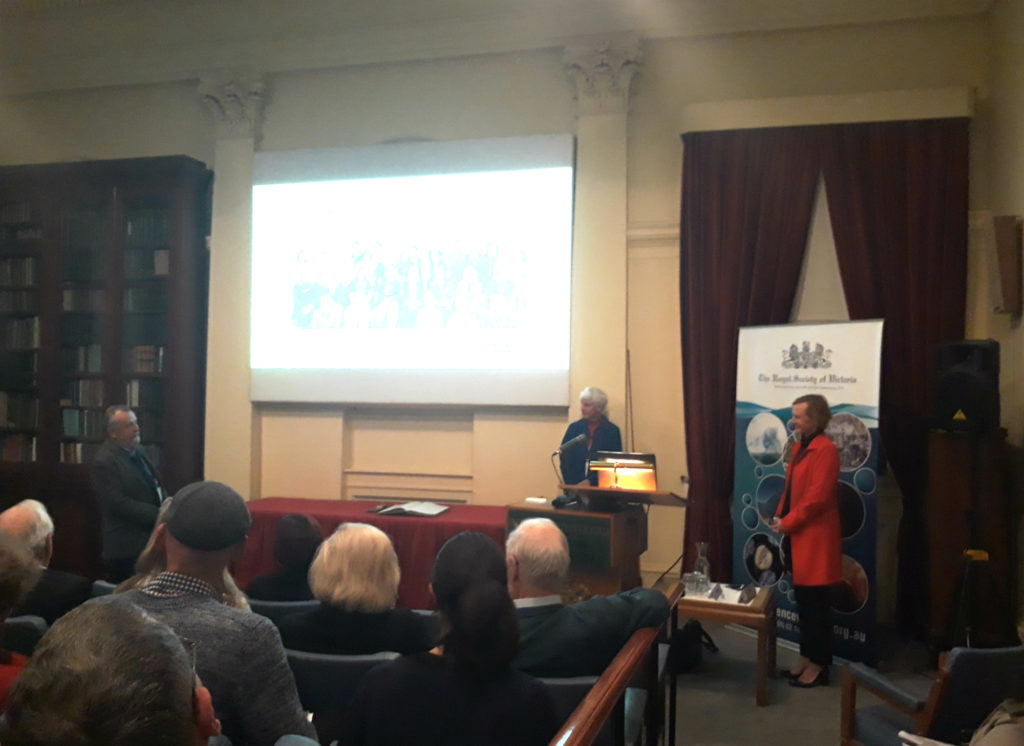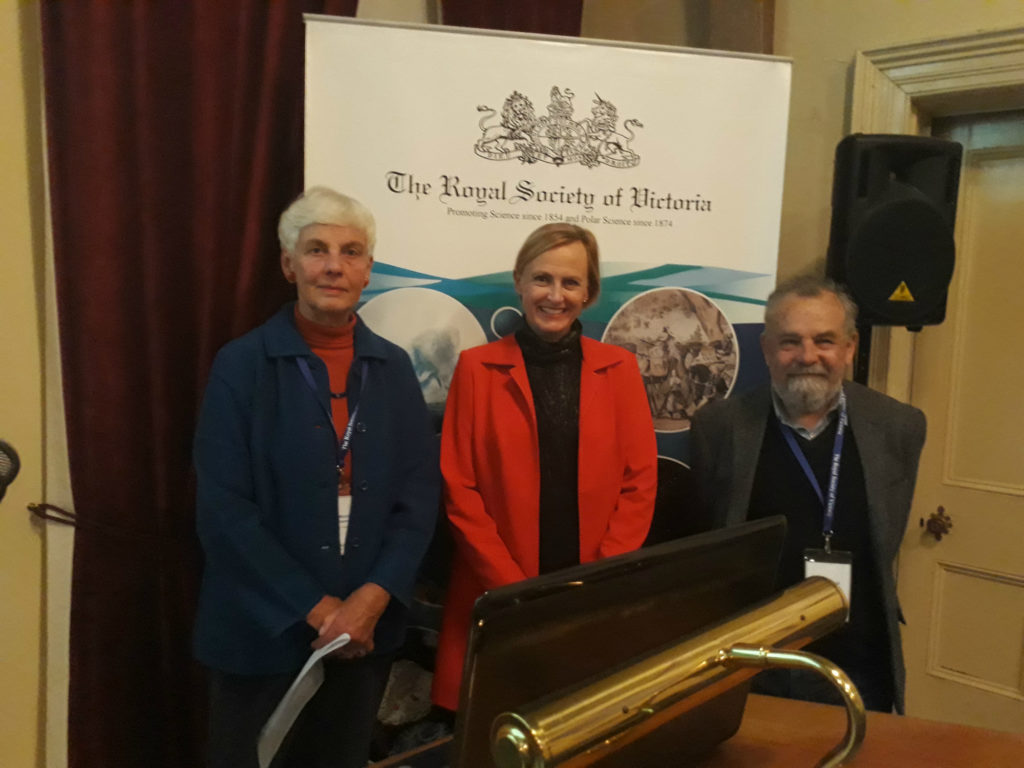Why is Australia the Food Allergy Capital of the World?
By Scott Reddiex and Catriona Nguyen-Robertson
RSV Science Communications
*This article follows a presentation to the Royal Society of Victoria by Professor Katie Allen titled “Why is Australia the Food Allergy Capital of the World?” on 10 May, 2018.
If you are unable to remember many children having an allergy when you were young, and have thought that it seems as though these days every second child has some kind of allergy, you’re not mistaken. The rate of food allergy in children has exploded over the last 30 years – from almost non-existence prior to the 1980s to >10% of infants tested in a Melbourne-based study having a verifiable food allergy in 20111.

With such a drastic increase in allergy, particularly in Australia, there are three questions that are typically raised: ‘why is this happening?’, ‘how do we treat this?’, and ‘how can we stop this?’. Professor Katie Allen is a clinician and medical researcher at the Royal Children’s Hospital (RCH) and the Murdoch Children’s Research Institute (MCRI), whose work for over a decade has focused on answering these questions with the ultimate goal of reducing the rate of allergies to zero.

Professor Allen comes from a long line of medical professionals: her father, grandfather and great aunt were doctors, and her mother and grandmother were nurses. Her father cared deeply about his profession and the community, and would occasionally take her on ward rounds as she grew up, where she learned to check pulses, and fainted at the sight of leg splints. In what could have led to a different future, however, she very nearly became a journalist, making it down to the final six applicants out of 800 who applied to join The Age. In an incredibly fortunate turn of events for us, she was unsuccessful, and studied medicine instead.
Professor Allen caught the bug for medical research during her fellowship in Chicago. While undertaking a month of pathology research training, examining countless paediatric liver transplant biopsies through a microscope, her professor suggested she ask a research question to make the tedious task more interesting. She rose to the challenge and researched centrilobular necrosis (CLN), a necrotic liver condition. During her first ward round after publishing a paper on CLN, she came across a patient who appeared to have the condition, however the senior doctors had thought to have ruled it out after an ultrasound revealed nothing. Dr Allen insisted that an angiogram be performed to confirm her suspicions, and the result showed that they were well founded – the child indeed had CLN, and received a new liver the following day. Her work has led to the reduction in mortality due to CLN from 30% to nearly zero. Professor Allen is dedicated to improving clinical practice, and considers herself more of a medical researcher than a scientist – her distinction being that she is driven by a focus on her patients.
In examining factors that affect our health, much has changed in the way we live over the past 50 years: better sanitation, lower rates of infection, and a decrease in tobacco usage have improved the average quality of life, while maternal age, urbanisation, and rates of obesity have also risen in this time. Professor Allen sought to identify whether any of these factors could be contributing to the increased rates of food allergy.

Having seen first-hand the increasing number of children with allergic reactions admitted to the RCH, Professor Allen and her group of researchers sought to identify the exact rate of food allergy in the population and devised the HealthNuts study. The study followed 5300 children from Melbourne aged 1 to 10 and assessed their reactions to specific foods known to commonly trigger allergic reactions (allergenic foods) – peanut, egg, cow’s milk and sesame. It found that over 10% of children had ‘challenge-proven allergy’, which is when a child is observed to have an allergic reaction to a specific food and treated in a safe clinical setting.
From the data collected as part of the HealthNuts study, three hypotheses for the reasons behind the rise in allergy were developed, collectively known as the ‘5 D’s’2:
- Dry skin and Diet
- Vitamin D
- Dogs and Dribble
The ‘Dry skin and Diet’ hypothesis, relates to eczema occurrence and diet in the first years of life. The HealthNuts study revealed that children who experienced eczema within the first 12 months of life had increased risk of developing allergy, and the risk was further increased the more severe and earlier in life the eczema appeared. The study also found that introducing allergenic foods into the diet within the first year of life significantly reduced the risk of developing an allergy – even for those children classified as ‘high risk’. In addition to studies by other research groups, these findings suggest that the route of allergen exposure is important in determining whether a child will develop allergy. When allergens eaten by the child are encountered by the immune system in the gut, the immune system becomes ‘tolerant’ towards them. In contrast, allergens encountered by the child through damaged skin in the case of eczema, skew the immune system towards an allergic response to the foreign compound, as it is perceived by the immune system as being more invasive. The Australasian Society of Clinical Immunology and Allergy (ASCIA) has developed guidelines for infant feeding and allergy informed by these findings (accessible here).

The ‘Vitamin D’ hypothesis stems from the finding that the rate of Australian children with peanut allergy increases the further south they live. The relationship between vitamin D deficiency and allergy development is particularly evident in Australia, one reason being the fortification of milk in the USA, UK and Europe with vitamin D, and vitamin D drops are recommended to European children early in life to supplement their comparatively lower sunshine exposure. This hypothesis is complemented by the HealthNuts study findings, which revealed that children who were vitamin D deficient were 11 times more likely to have peanut allergy, and studies that demonstrate that low levels of vitamin D skew the immune system towards activation rather than tolerance. Professor Allen’s next step in testing this particular hypothesis is to perform clinical trials – with grants awarded by both the Australian and US governments, the study will assess whether vitamin D drop supplementation has a significant impact on allergy development in a cohort of 3000 infants.
The third of the hypotheses, ‘Dogs and Dribble’, relates to microbial diversity in our gastrointestinal tract (the microbiome) and its relationship with our immune system. Allergy rates have risen faster than our genes can change, therefore suggesting that some environmental factors are also to blame. Interestingly, it has been found that owning a dog and having older siblings both appear to be protective against developing allergy, and this is thought to be due to a greater exposure to germs. Professor Allen’s colleague at MCRI, Professor Mimi Tang, has developed a peanut allergy treatment that incorporates the introduction of a probiotic and doses of peanut simultaneously to induce tolerance, therefore strengthening the hypothesis that bacteria have a role to play.
While most studies Professor Allen discussed focus on peanut allergy, she is now looking beyond at other allergens. The allergy situation in Australia is dire and has reached the stage where parents have parked outside hospitals around Australia to feed their children peanuts and other allergenic foods for the first time, with the fear that their child could have a severe reaction requiring immediate hospital attention. Professor Allen’s vision is to prevent food allergy in Australian children, and she aims to translate her research findings into clinical practice and public health policy to ensure the best outcomes for children both here and around the world.
More information on the HealthNuts study and the publications it has contributed to so far is available at the Murdoch Children’s Research Institute website here.
References:
- Osborne, N.J. et al. Prevalence of challenge-proven IgE-mediated food allergy using population-based sampling and predetermined challenge criteria in infants. J Allergy Clin Immunol 127, 668-676 e661-662 (2011).
- Allen, K.J. & Koplin, J.J. Prospects for Prevention of Food Allergy. J Allergy Clin Immunol Pract 4, 215-220 (2016).






